Abstract
Dose/response measurements were made on the guinea-pig isolated ileum with six agonists, acetylcholine, 5-hydroxytryptamine, nicotine, dimethylphenylpiperazinium, choline phenyl ether and histamine. The dose effects were repeated in the presence of each of twelve antagonists and one anticholinesterase. Acetylcholine and histamine were chosen because of their direct mode of action on smooth muscle, nicotine, dimethylphenylpiperazinium and choline phenyl ether were used as examples of drugs that act at the ganglionic acetylcholine receptor. 5-Hydroxytryptamine was the drug investigated. Hyoscine blocked the contractions caused by acetylcholine, 5-hydroxytryptamine and the ganglion-stimulants but left the responses to histamine unchanged. The anticholinesterase N,N'-diisopropylphosphorodiamidic fluoride (mipafox) potentiated all the agonists except histamine. The strength of potentiation decreased in the order 5-hydroxytryptamine, nicotine, dimethylphenylpiperazinium and choline phenyl ether, and acetylcholine. The local anaesthetic procaine inhibited to the same extent contractions elicited by 5-hydroxytryptamine, nicotine, dimethylphenylpiperazinium and choline phenyl ether. These results showed that 5-hydroxytryptamine, like nicotine, choline phenyl ether and dimethylphenylpiperazinium, mediated its response through the nervous plexus. Of those tested 5-hydroxytryptamine was the only specific antagonist to 5-hydroxytryptamine; lysergic acid derivatives produced spasm and prolonged changes in tone; phenoxybenzamine caused non-specific block. The diverse modes of action of a number of ganglion-blocking agents were selectively used. Thus hexamethonium, pentolinium, and nicotine in its competitive phase, blocked contractions due to nicotine, dimethylphenylpiperazinium and choline phenyl ether and left those due to 5-hydroxytryptamine, acetylcholine and histamine unchanged. The depolarizing ganglion-blocking agents, dimethylphenylpiperazinium and nicotine, inhibited the responses to all the indirectly acting drugs. Furthermore, mecamylamine, a drug with a less well-defined mode of action, partially inhibited contractions due to 5-hydroxytryptamine in a concentration that blocked those due to nicotine, dimethylphenylpiperazinium and choline phenyl ether. Pempidine, known to act like mecamylamine, did not antagonize 5-hydroxytryptamine. It is concluded that 5-hydroxytryptamine activates specific receptors sited at the intramural parasympathetic ganglion cells.
Full text
PDF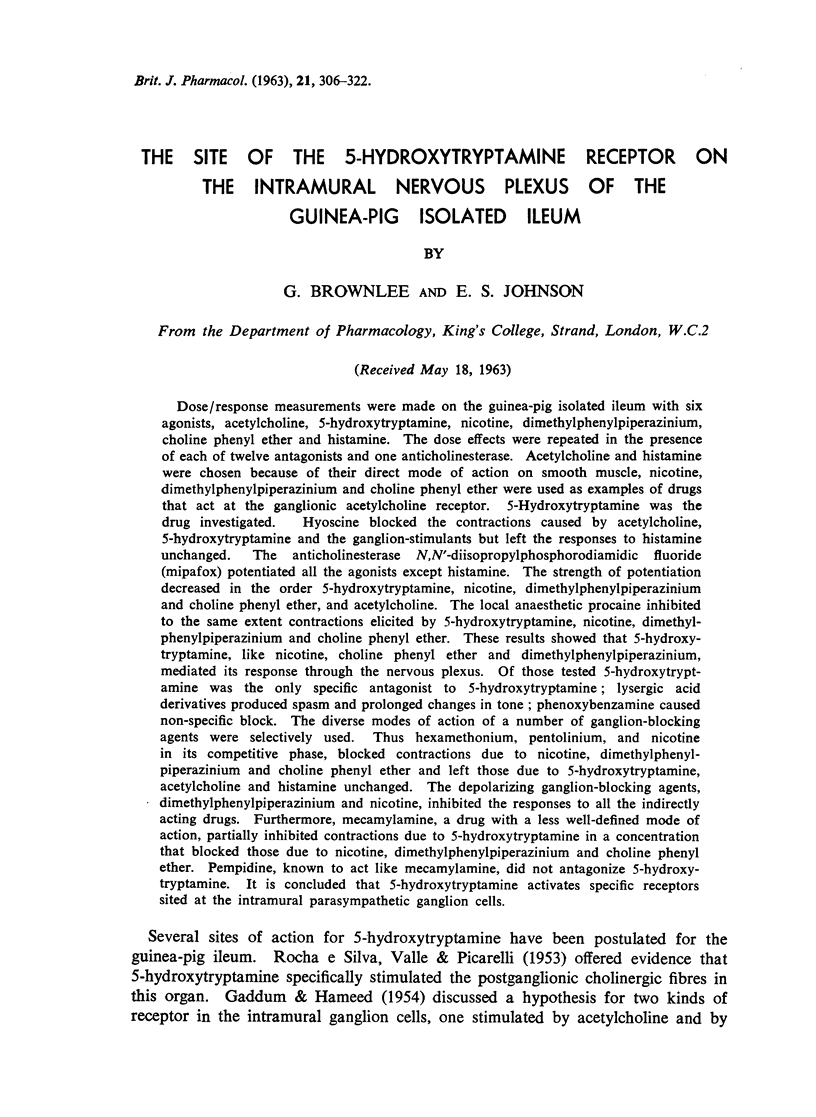
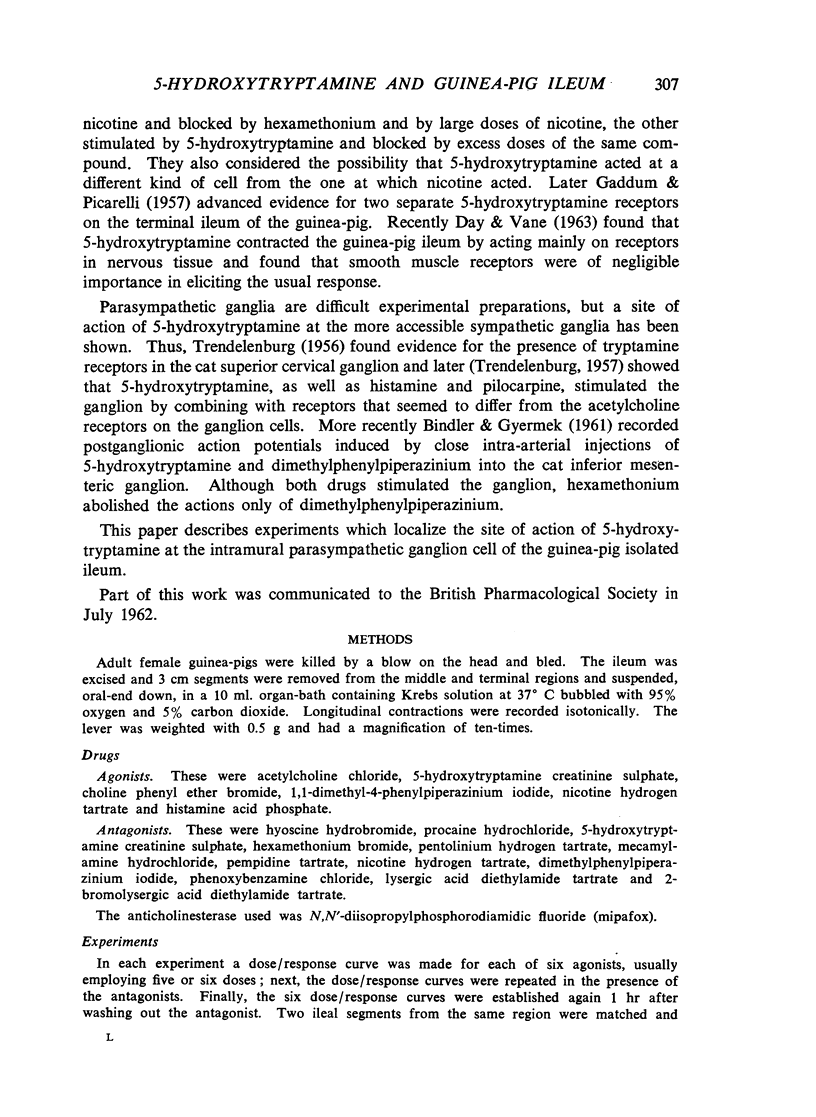
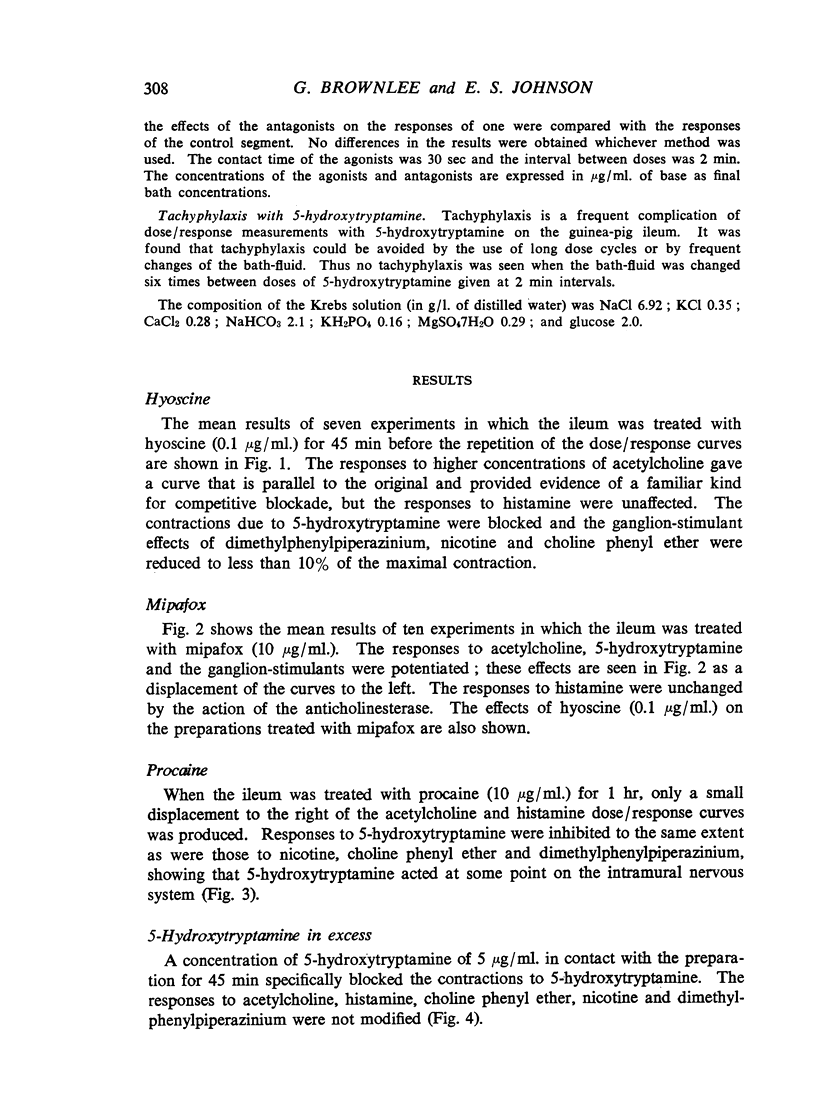
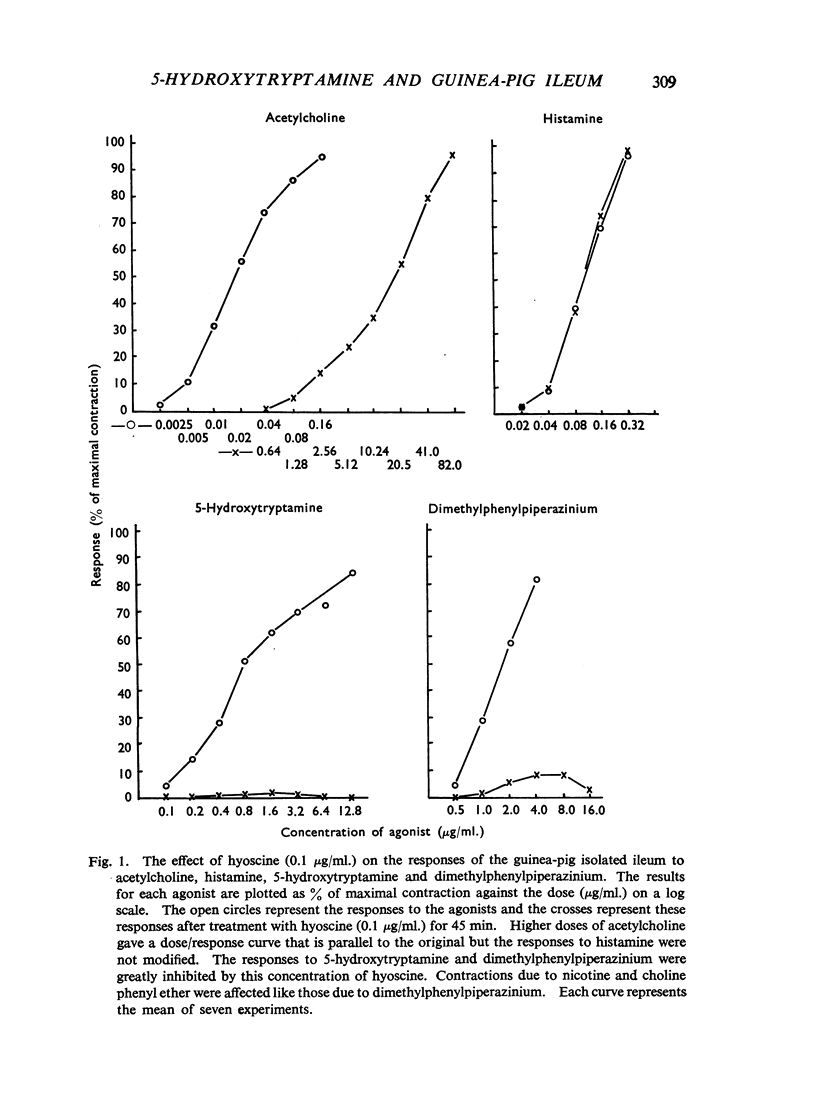
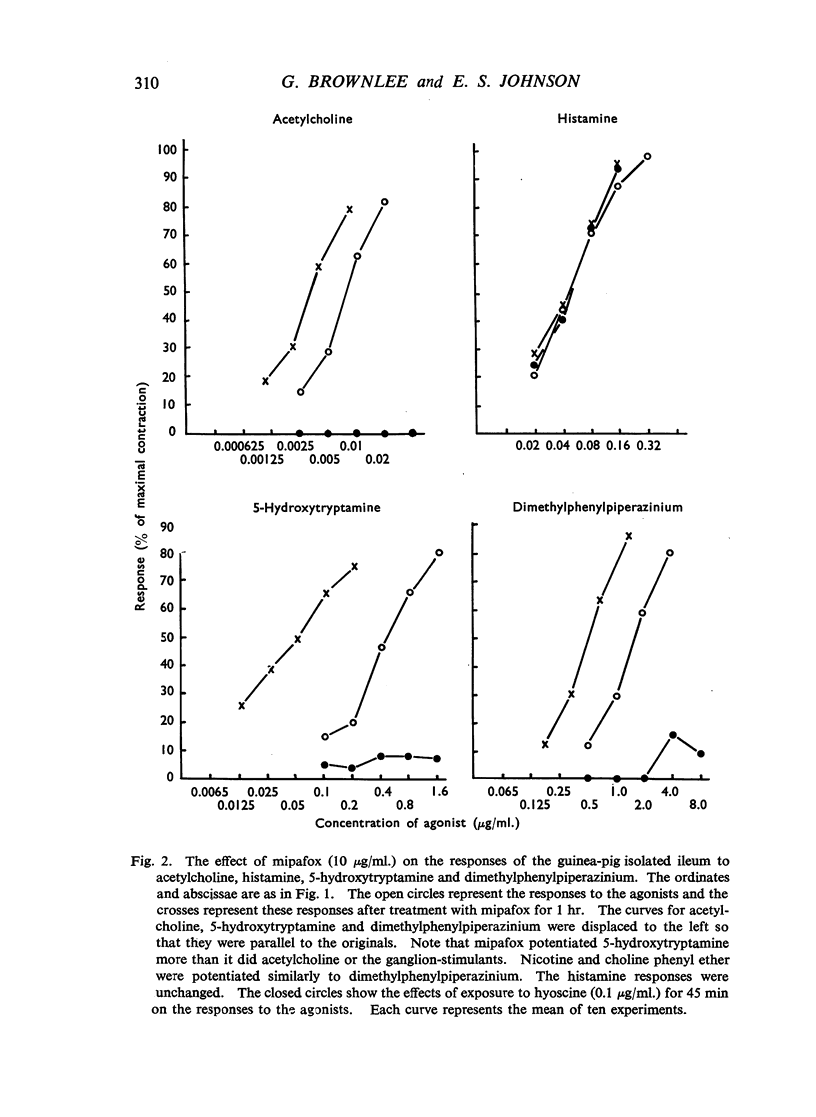
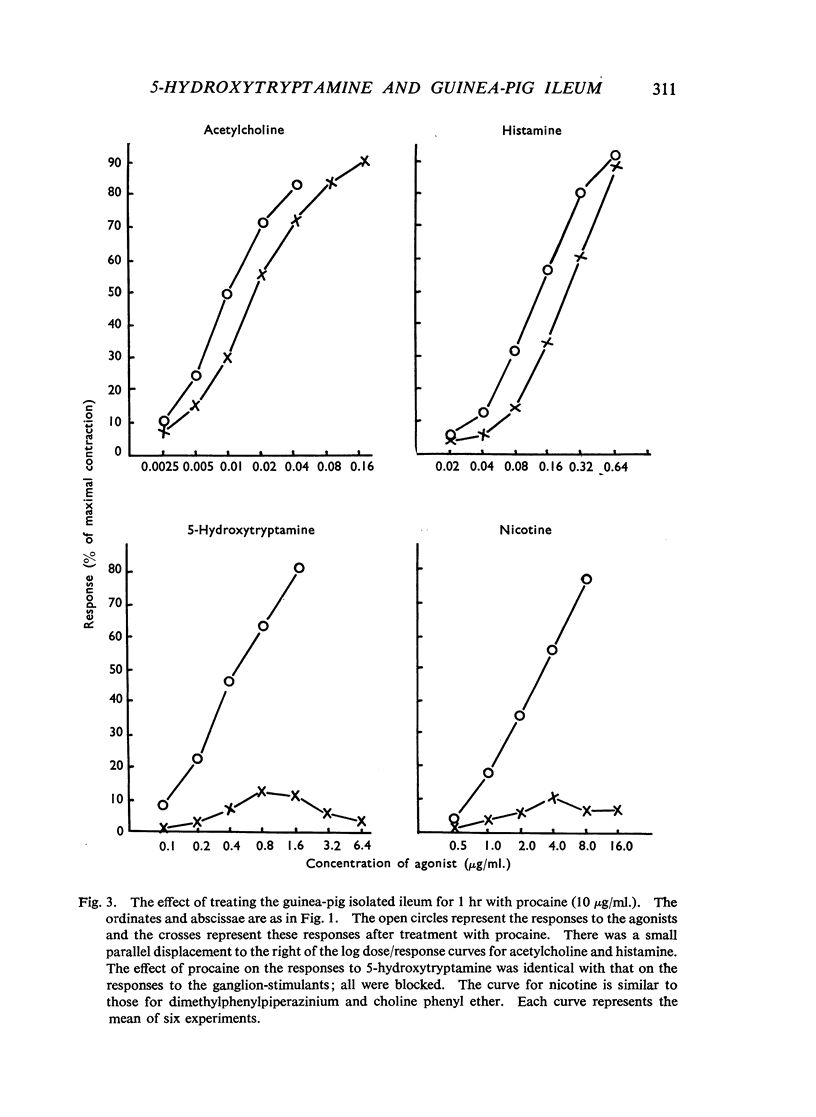
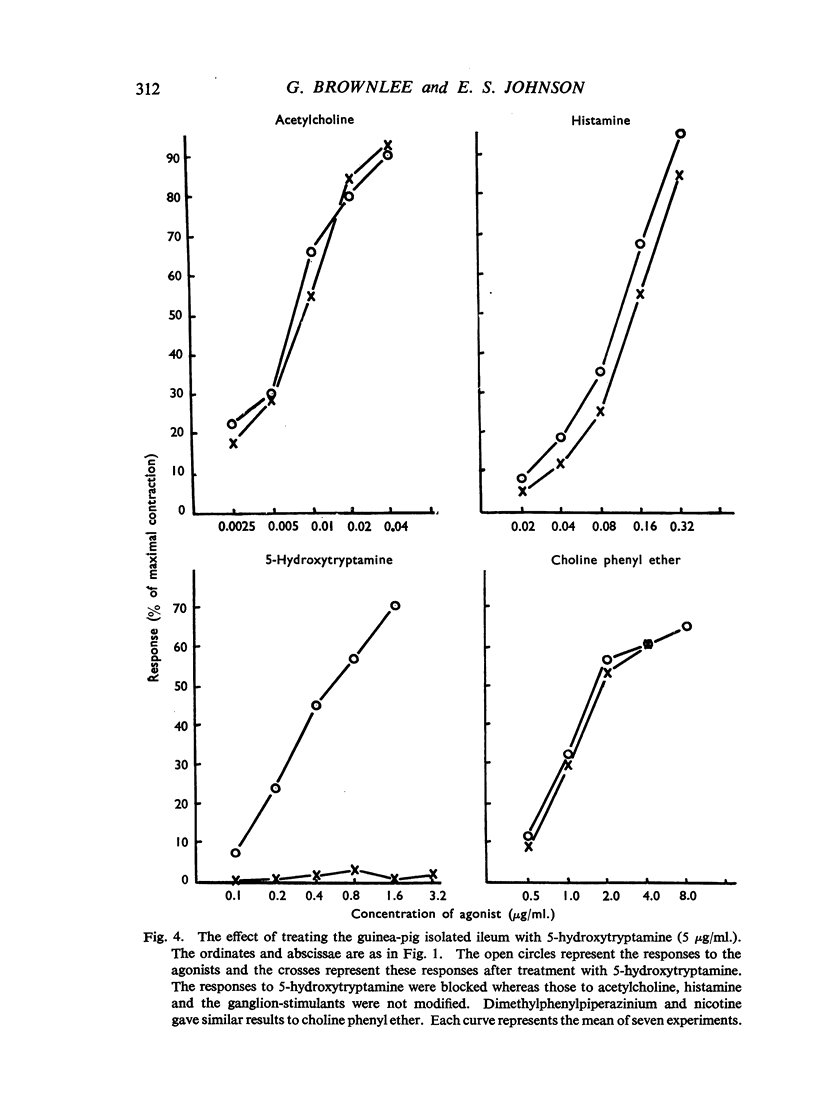
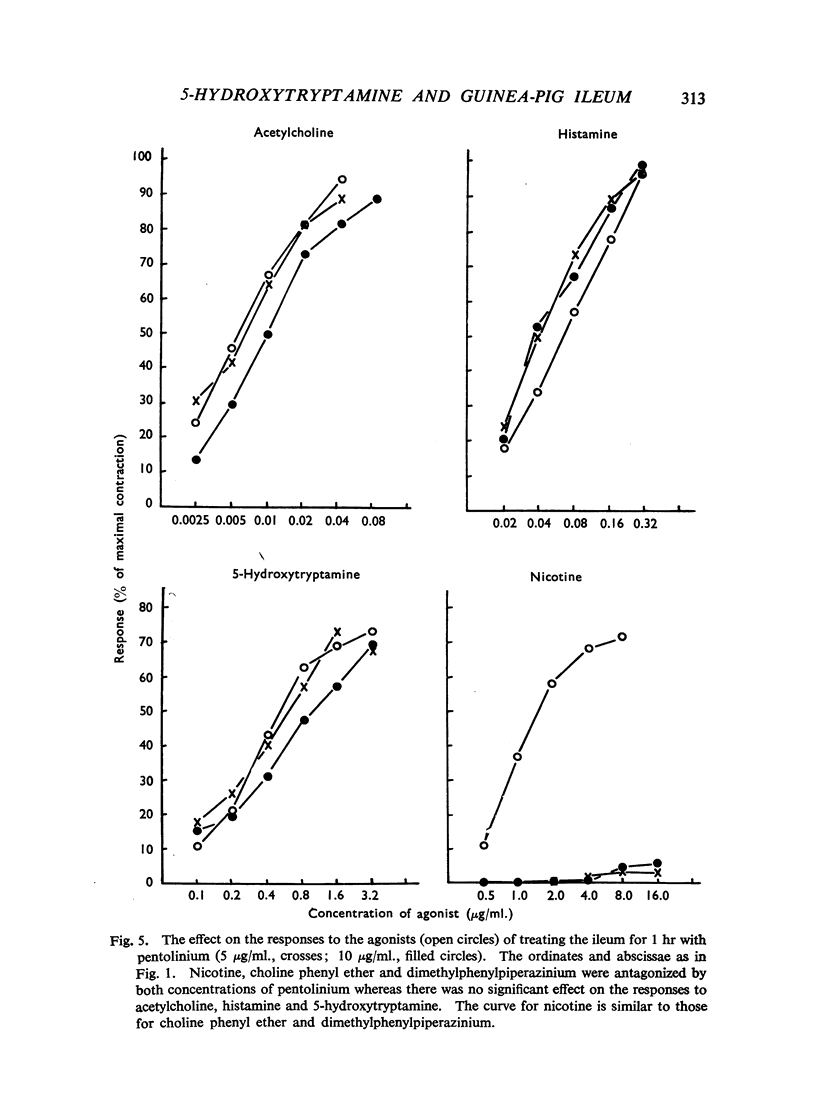
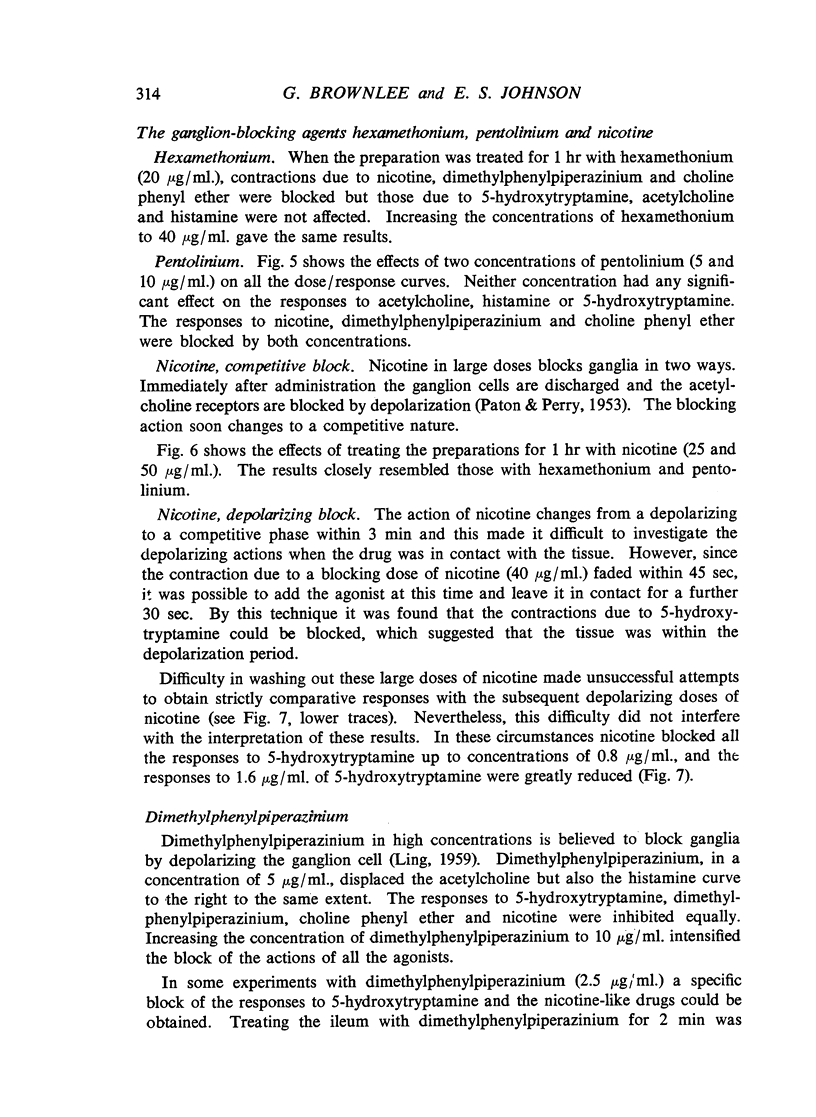
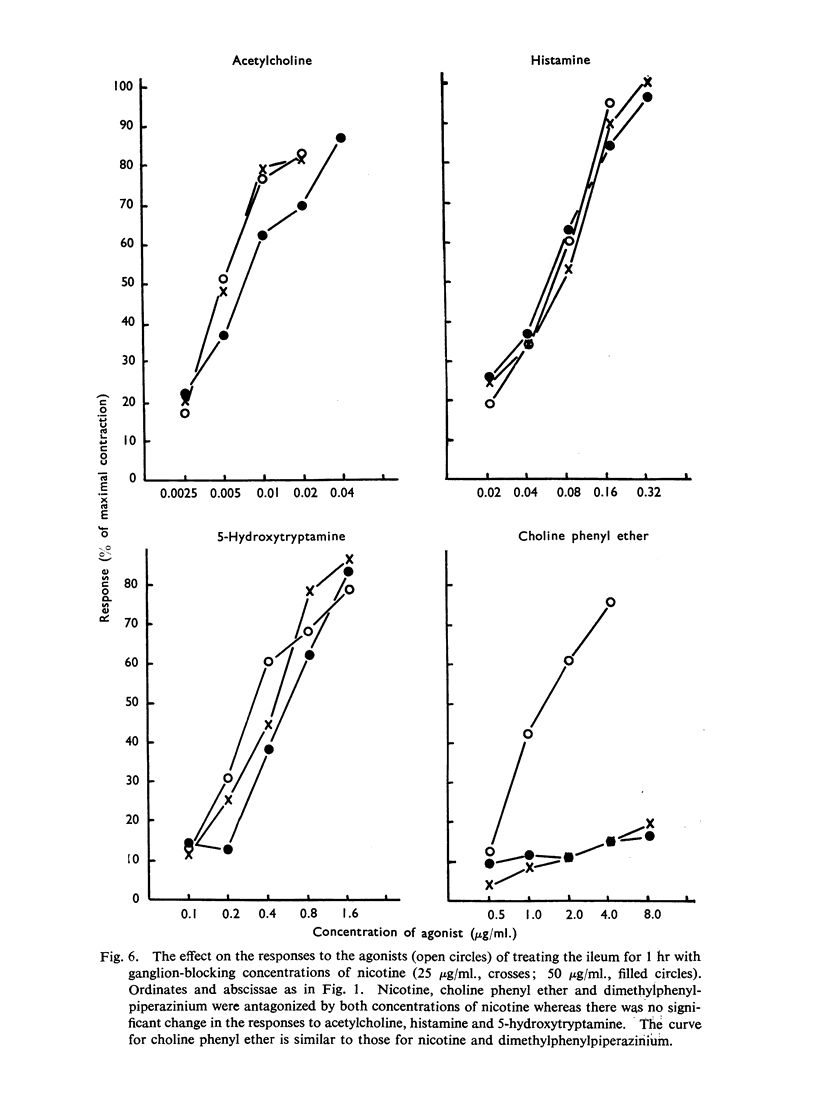
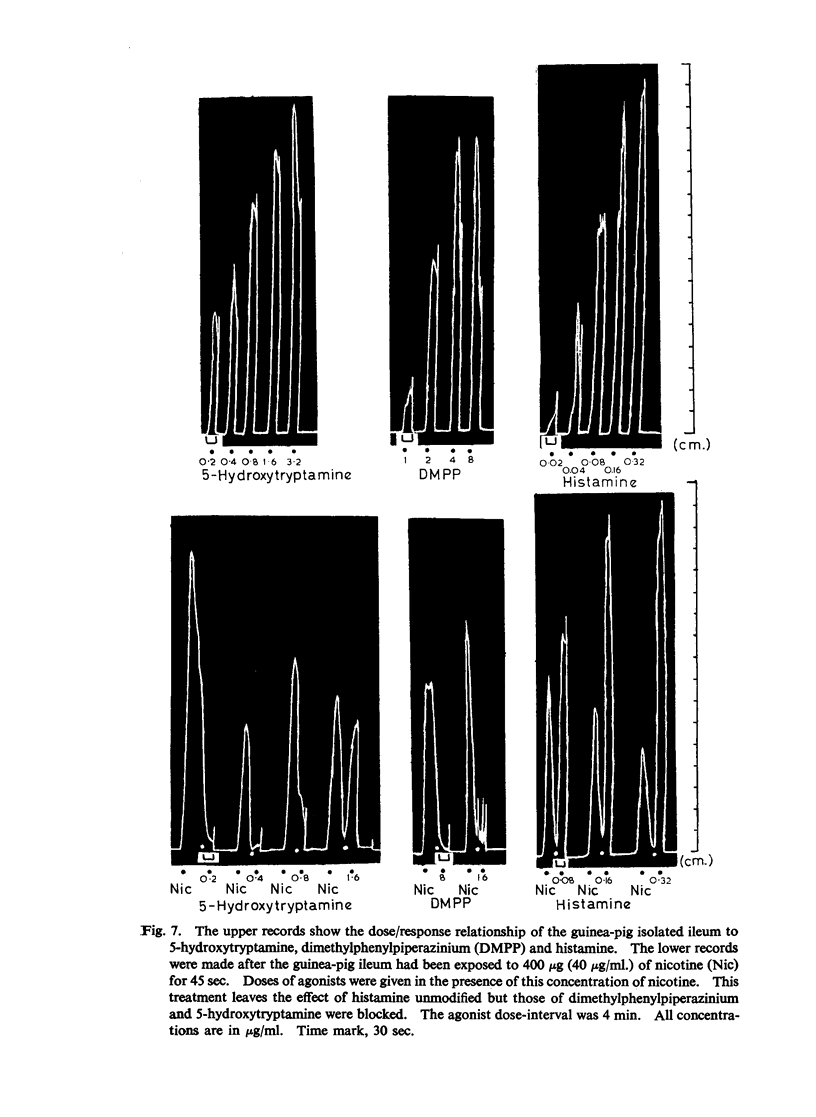
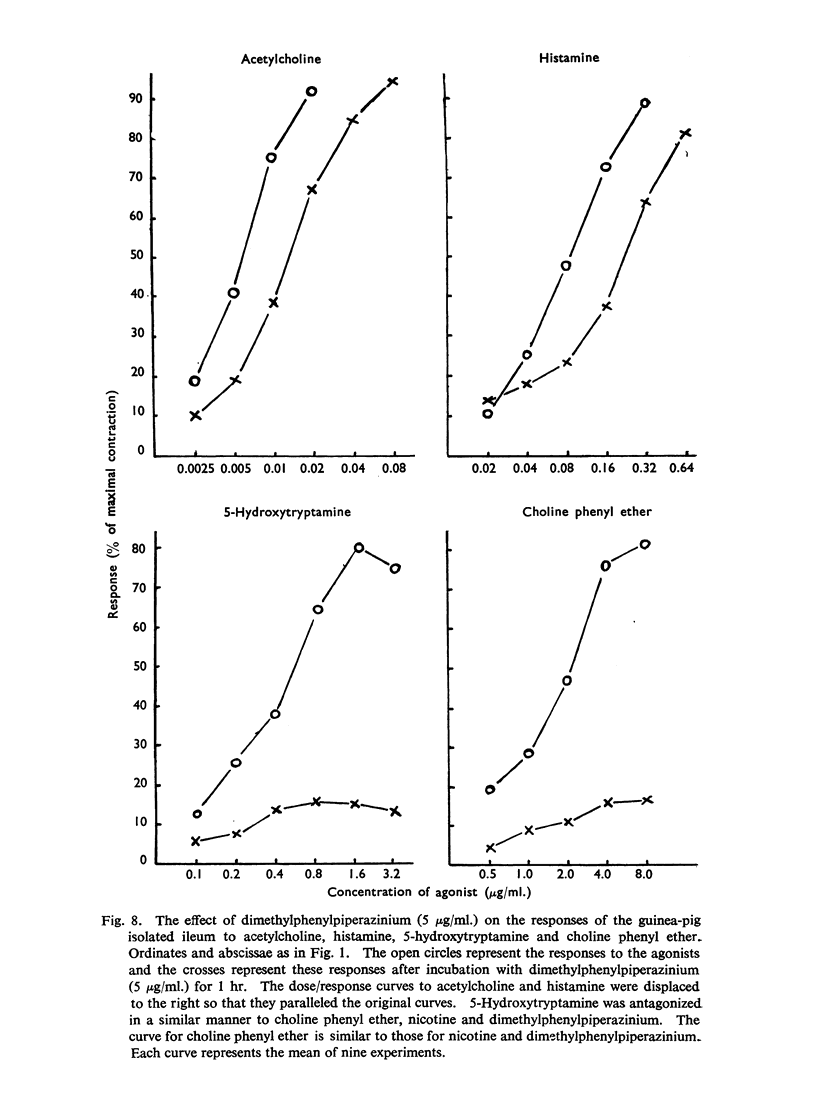
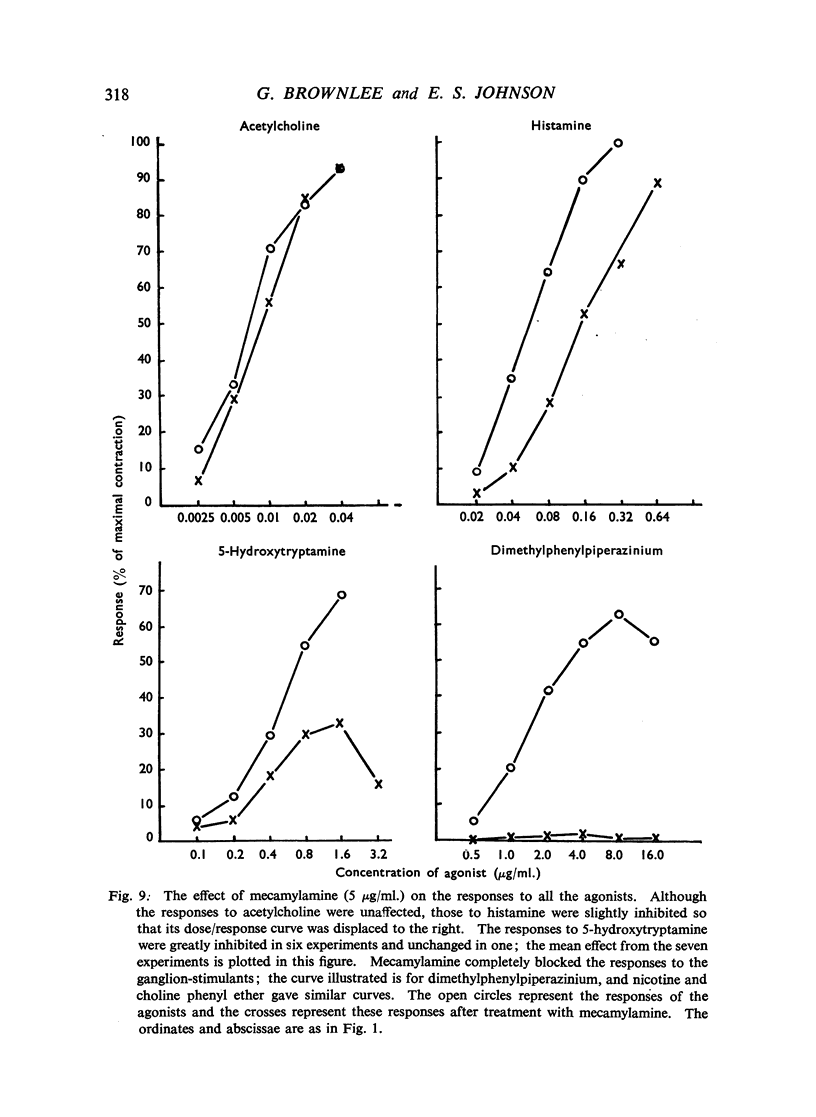
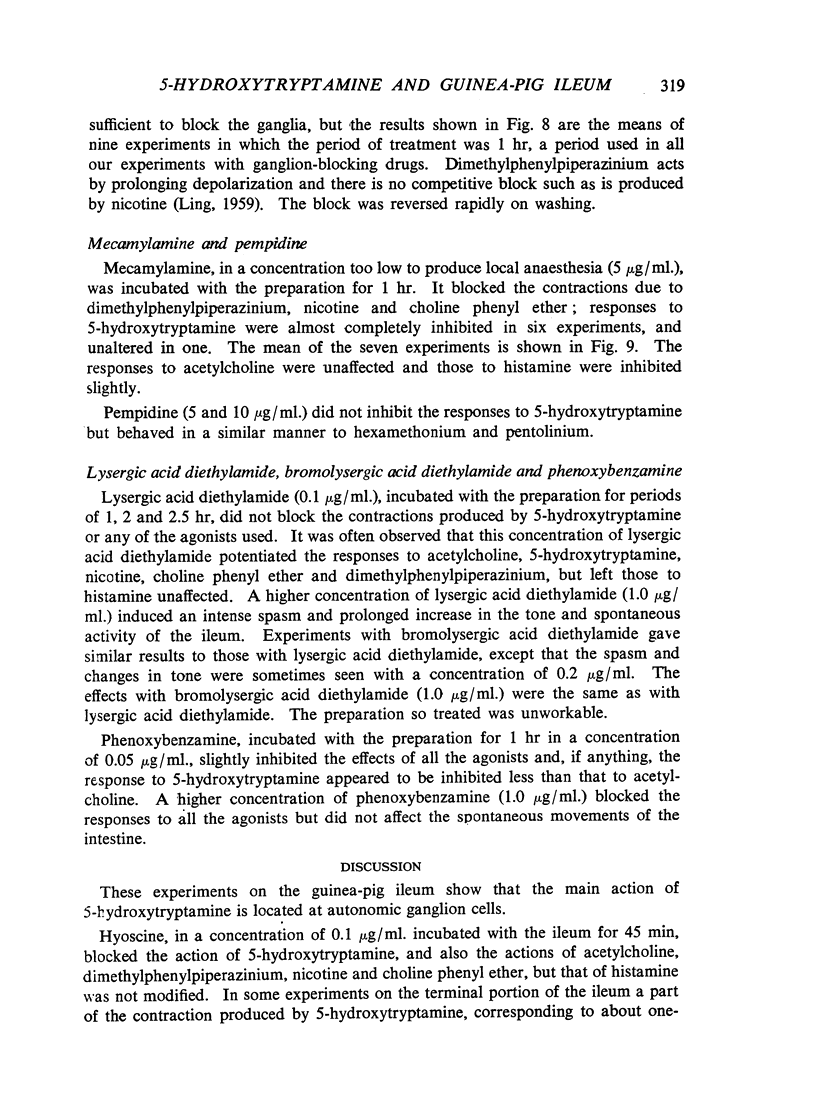
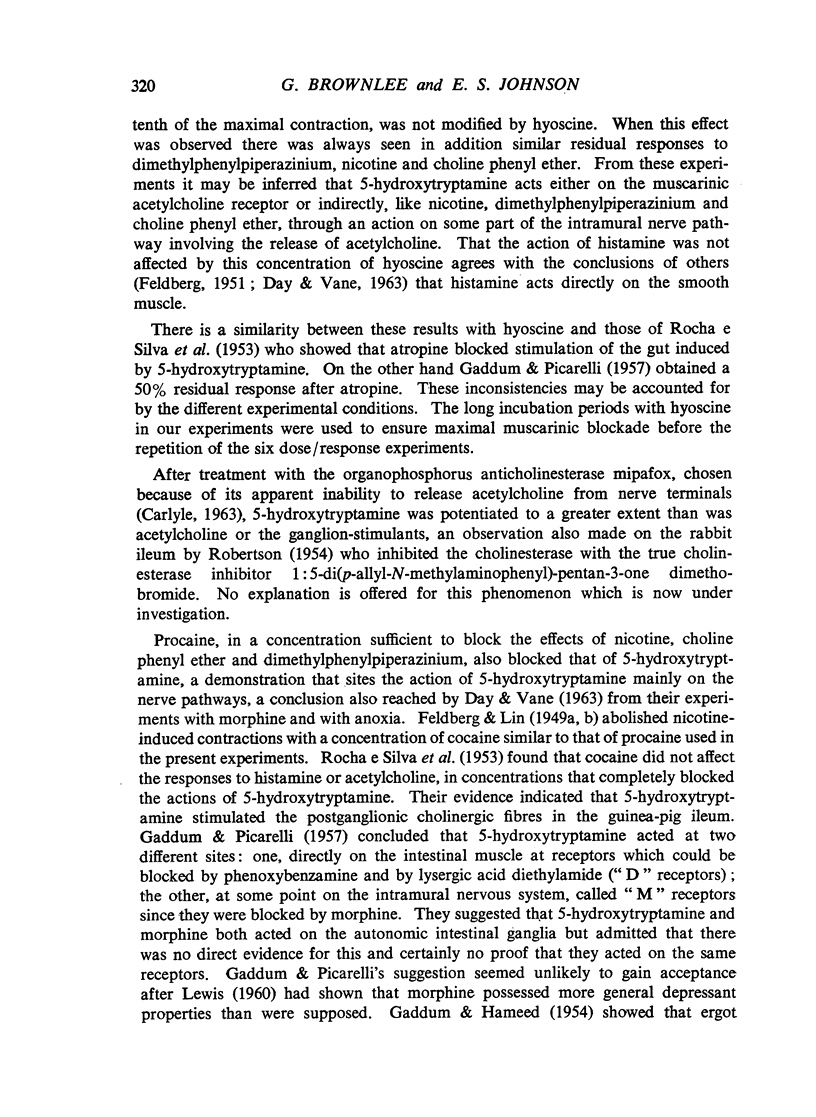
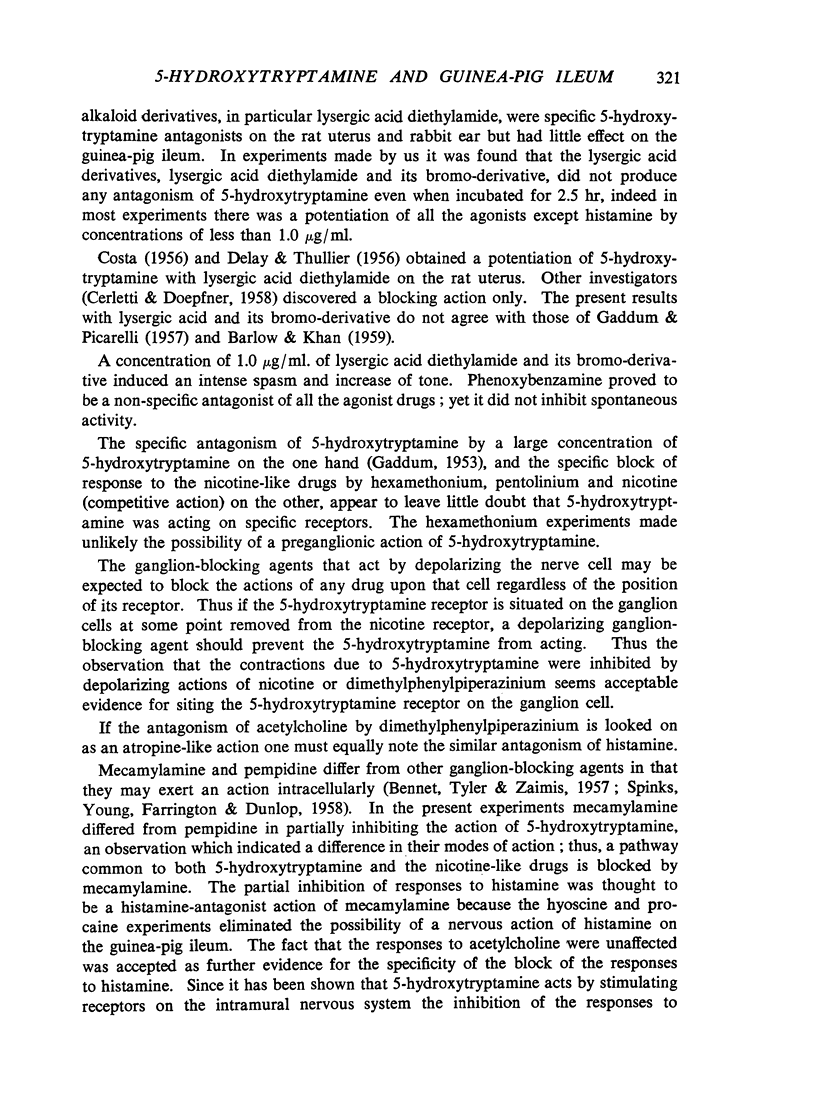
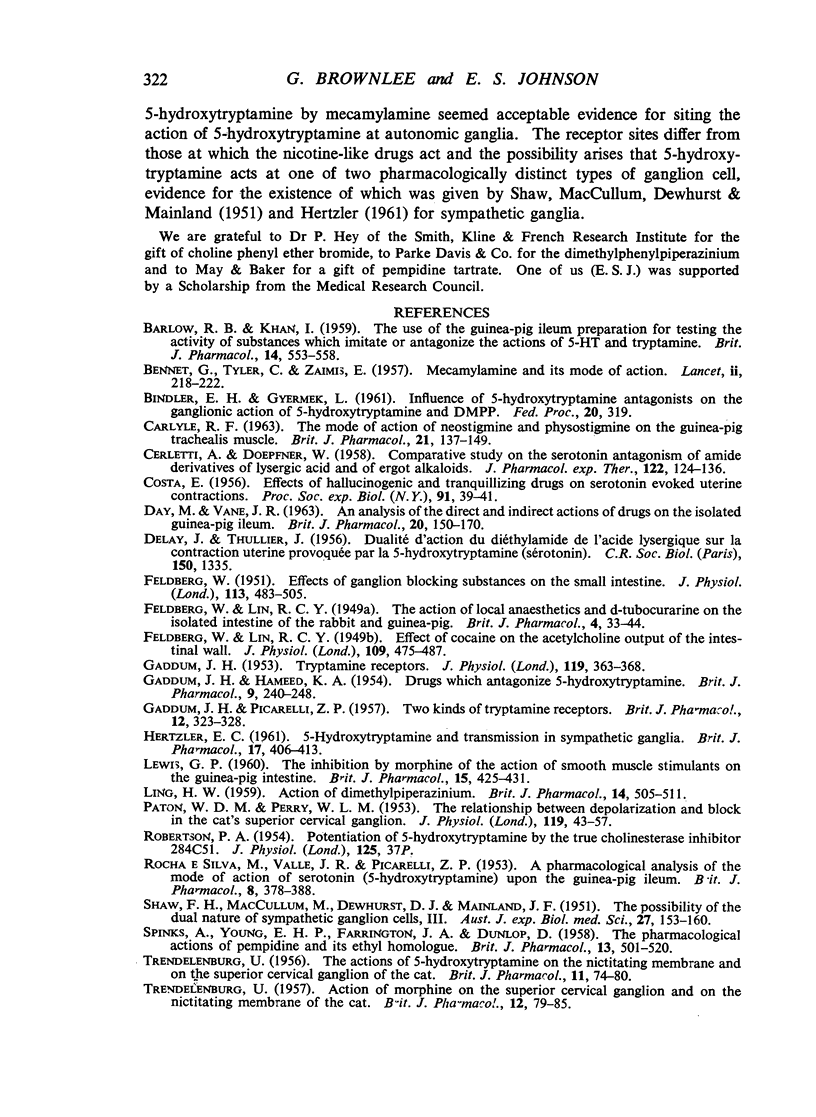
Selected References
These references are in PubMed. This may not be the complete list of references from this article.
- BARLOW R. B., KHAN I. The use of the guinea-pig ileum preparation for testing the activity of substances which imitate or antagonize the actions of 5-hydroxytryptamine and tryptamine. Br J Pharmacol Chemother. 1959 Dec;14:553–558. doi: 10.1111/j.1476-5381.1959.tb00963.x. [DOI] [PMC free article] [PubMed] [Google Scholar]
- BENNETT G., TYLER C., ZAIMIS E. Mecamylamine and its mode of action. Lancet. 1957 Aug 3;273(6988):218–222. doi: 10.1016/s0140-6736(57)91598-2. [DOI] [PubMed] [Google Scholar]
- CARLYLE R. F. THE MODE OF ACTION OF NEOSTIGMINE AND PHYSOSTIGMINE ON THE GUINEA-PIG TRACHEALIS MUSCLE. Br J Pharmacol Chemother. 1963 Aug;21:137–149. doi: 10.1111/j.1476-5381.1963.tb01509.x. [DOI] [PMC free article] [PubMed] [Google Scholar]
- CERLETTI A., DOEPFNER W. Comparative study on the serotonin antagonism of amide derivatives of lysergic acid and of ergot alkaloids. J Pharmacol Exp Ther. 1958 Jan;122(1):124–136. [PubMed] [Google Scholar]
- COSTA E. Effects of hallucinogenic and tranquilizing drugs on serotonin evoked uterine contractions. Proc Soc Exp Biol Med. 1956 Jan;91(1):39–41. doi: 10.3181/00379727-91-22163. [DOI] [PubMed] [Google Scholar]
- DAY M., VANE J. R. An analysis of the direct and indirect actions of drugs on the isolated guinea-pig ileum. Br J Pharmacol Chemother. 1963 Feb;20:150–170. doi: 10.1111/j.1476-5381.1963.tb01306.x. [DOI] [PMC free article] [PubMed] [Google Scholar]
- DELAY J., THUILLIER J. Dualité d'action du diéthylamide de l'acide lysergique sur la contraction utérine provoquée par la 5-hydroxytryptamine (sérotonine). C R Seances Soc Biol Fil. 1956;150(7):1335–1336. [PubMed] [Google Scholar]
- FELDBERG W. Effects of ganglion-blocking substances on the small intestine. J Physiol. 1951 May;113(4):483–505. doi: 10.1113/jphysiol.1951.sp004590. [DOI] [PMC free article] [PubMed] [Google Scholar]
- FELDBERG W., LIN R. C. Y. The effect of cocaine on the acetylcholine output of the intestinal wall. J Physiol. 1949 Sep;109(3-4):475–487. doi: 10.1113/jphysiol.1949.sp004410. [DOI] [PMC free article] [PubMed] [Google Scholar]
- GADDUM J. H., HAMEED K. A. Drugs which antagonize 5-hydroxytryptamine. Br J Pharmacol Chemother. 1954 Jun;9(2):240–248. doi: 10.1111/j.1476-5381.1954.tb00848.x. [DOI] [PMC free article] [PubMed] [Google Scholar]
- GADDUM J. H., PICARELLI Z. P. Two kinds of tryptamine receptor. Br J Pharmacol Chemother. 1957 Sep;12(3):323–328. doi: 10.1111/j.1476-5381.1957.tb00142.x. [DOI] [PMC free article] [PubMed] [Google Scholar]
- GADDUM J. H. Tryptamine receptors. J Physiol. 1953 Feb 27;119(2-3):363–368. doi: 10.1113/jphysiol.1953.sp004851. [DOI] [PMC free article] [PubMed] [Google Scholar]
- HERTZLER E. C. 5-Hydroxytryptamine and transmission in sympathetic ganglia. Br J Pharmacol Chemother. 1961 Dec;17:406–413. doi: 10.1111/j.1476-5381.1961.tb01126.x. [DOI] [PMC free article] [PubMed] [Google Scholar]
- LEWIS G. P. The inhibition by morphine of the action of smooth muscle stimulants on the guinea-pig intestine. Br J Pharmacol Chemother. 1960 Sep;15:425–431. doi: 10.1111/j.1476-5381.1960.tb01267.x. [DOI] [PMC free article] [PubMed] [Google Scholar]
- LING H. W. Actions of dimethylphenylpiperazinium. Br J Pharmacol Chemother. 1959 Dec;14:505–511. doi: 10.1111/j.1476-5381.1959.tb00957.x. [DOI] [PMC free article] [PubMed] [Google Scholar]
- PATON W. D. M., PERRY W. L. M. The relationship between depolarization and block in the cat's superior cervical ganglion. J Physiol. 1953 Jan;119(1):43–57. doi: 10.1113/jphysiol.1953.sp004827. [DOI] [PMC free article] [PubMed] [Google Scholar]
- ROBERTSON P. A. Potentiation of 5-hydroxytryptamine by the true-cholinesterase inhibitor 284C51. J Physiol. 1954 Jul 28;125(1):37–8P. [PubMed] [Google Scholar]
- ROCHA E SILVA M., VALLE J. R., PICARELLI P. A pharmacological analysis of the mode of action of serotonin (5-hydroxytryptamine) upon the guinea-pig ileum. Br J Pharmacol Chemother. 1953 Dec;8(4):378–388. doi: 10.1111/j.1476-5381.1953.tb01333.x. [DOI] [PMC free article] [PubMed] [Google Scholar]
- SHAW F. H., MacCALLIUM M., DEWHURST D. J., MAINLAND F. J. The possibility of the dual nature of sympathetic ganglion cells III. Aust J Exp Biol Med Sci. 1951 Mar;29(2):153–160. doi: 10.1038/icb.1951.18. [DOI] [PubMed] [Google Scholar]
- SPINKS A., YOUNG E. H., FARRINGTON J. A., DUNLOP D. The pharmacological actions of pempidine and its ethyl homologue. Br J Pharmacol Chemother. 1958 Dec;13(4):501–520. doi: 10.1111/j.1476-5381.1958.tb00246.x. [DOI] [PMC free article] [PubMed] [Google Scholar]
- TRENDELENBURG U. The action of 5-hydroxytryptamine on the nictitating membrane and on the superior cervical ganglion of the cat. Br J Pharmacol Chemother. 1956 Mar;11(1):74–80. doi: 10.1111/j.1476-5381.1956.tb01031.x. [DOI] [PMC free article] [PubMed] [Google Scholar]
- TRENDELENBURG U. The action of morphine on the superior cervical ganglion and on the nictitating membrane of the cat. Br J Pharmacol Chemother. 1957 Mar;12(1):79–85. doi: 10.1111/j.1476-5381.1957.tb01366.x. [DOI] [PMC free article] [PubMed] [Google Scholar]


